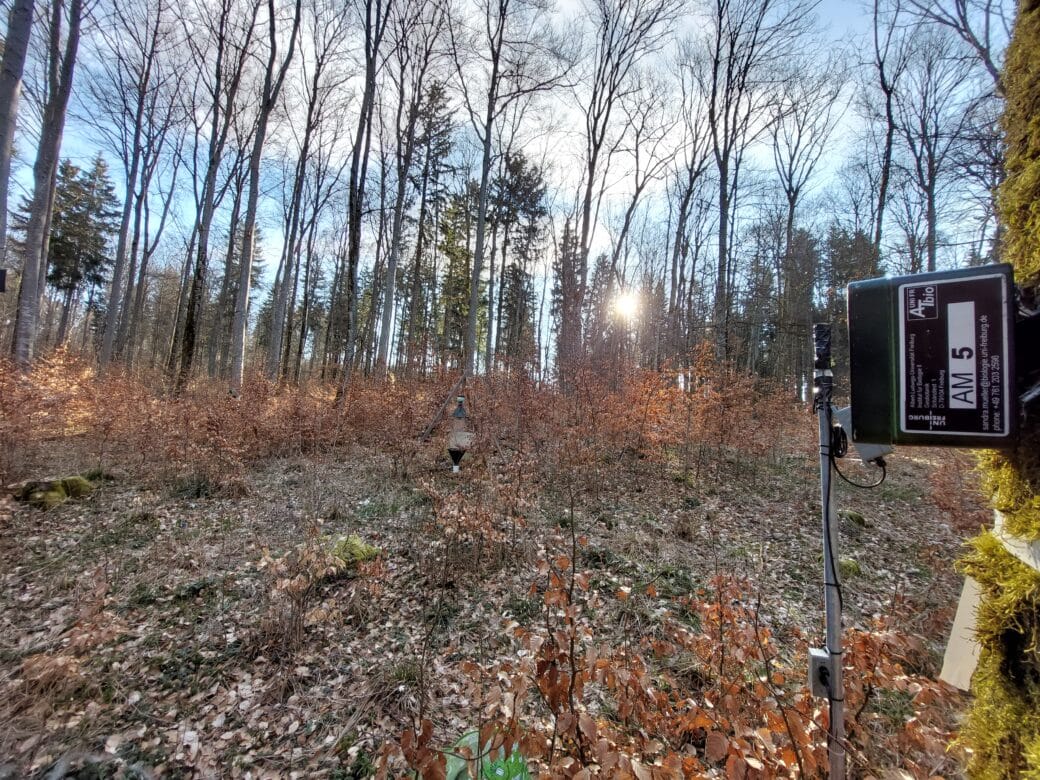Using computer audition to understand the drivers of soundscape composition, and to predict parasitation rates based on vocalisations of bird species

The ongoing biodiversity crisis has endangered thousands of species around the world and its urgency is being increasingly acknowledged. Against the backdrop of ongoing species extinction, (partially) automated methods of environmental monitoring can provide important data on the state of Biodiversity.
To that end, HearTheSpecies aims to exploit the potential of a heretofore underexplored data stream: audio.
This project aspires to bridge the gap between existing data and infrastructure in the Exploratories framework and state-of-the-art computer audition algorithms. The developed tools for coarse and fine-scale sound source separation and species identification can be used to analyse the interaction among environmental variables, and the different soundscape components: biophony (biotic sounds), geophony (abiotic sounds) and anthropophony (human-related sounds).
The primary goals are:
- to annotate existing data that enable the training of AI algorithms and collect new data in order to apply those in new conditions,
- to develop AI-based automatic diarization and separation tools that allow for the coarse separation of biophony, anthropophony, and geophony from entangled soundscapes and the fine-grained detection and separation of species and distinct anthropogenic sounds,
- to use these separated sounds in order to model the impact of local and regional land-use intensity, landscape configuration, and vegetation structure on soundscape composition and individual species of the acoustic community, and
- to predict parasitation rates in birds through their separated vocalisations.
- Increasing local and regional land use intensity decreases the richness and abundance of soniferous species
- Increasing local and regional land use intensity leads to a homogenization of soniferous species composition and thus to a homogenization of the soundscape composition.
- Increasing geophony and anthropophony decreases the acoustic space available for animal vocalisations and thus increases competition among animals.
- Reducing local land use intensity in grasslands has positive effects on insect acoustic (mainly orthopteran) and small mammals’ activity.
- Increasing deadwood volume enhances the availability of biotic resources for soniferous species (c.f. Penone et al., 2019) and thus increases the diversity of biophony.
- Changes in abiotic conditions affect temporal activity patterns of soniferous species, leading to an increase of insect stridulations and bird vocalisations.
Within the Biodiversity Exploratories there is already a large audio data set that was collected by two previous projects, “Birds & Bats” and “BEsound”. New data will be collected on the newly established joint multi-site experiments both within the forest as well as the grassland sites.
Within this project, we will annotate, a fraction of this huge dataset to train the newly to be developed algorithms. These will then be applied to the whole audio dataset, as well as to audio data collected in other projects such as Birds & Bats and the newly recorded audio data.
Within REX, we aim to record the acoustic activity of insects (orthoptera and bees), as well as small mammals. Within FOX the respective larger plots sizes and distances among plots would allow testing additionally for the effects of forest structure manipulation on the acoustic activity of birds.
Bio-acoustic event detection pertains to the detection of individual species (through their vocalisations) and anthropophony/biophony sounds.
We will quantify presence and absence of different soundscape components and their specific elements over time using sound source separation acquired within DL (Deep Learning). Then, for each soniferours animal group (insects, birds, mammals), the acoustic diversity is determined using ecoacoustic diversity indices (e.g. Acoustic Complexity Index). Multivariate methods will then be applied to determine the acoustic composition of the sites. Further, we will test which aspects of local and regional land use drive the composition of the soundscape and the diversity of the biophony.










